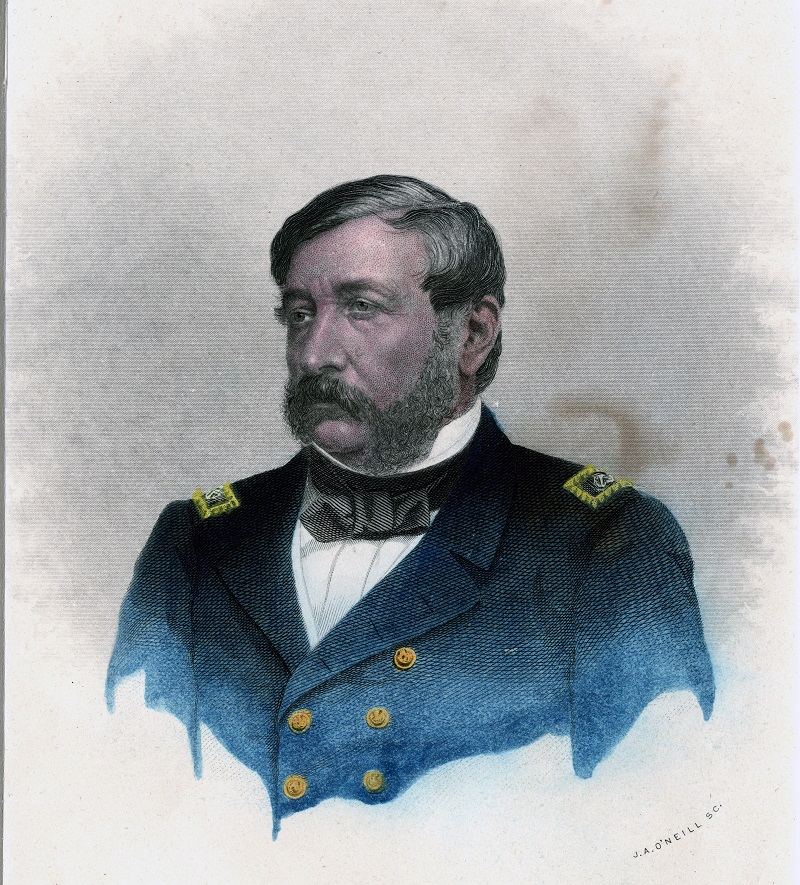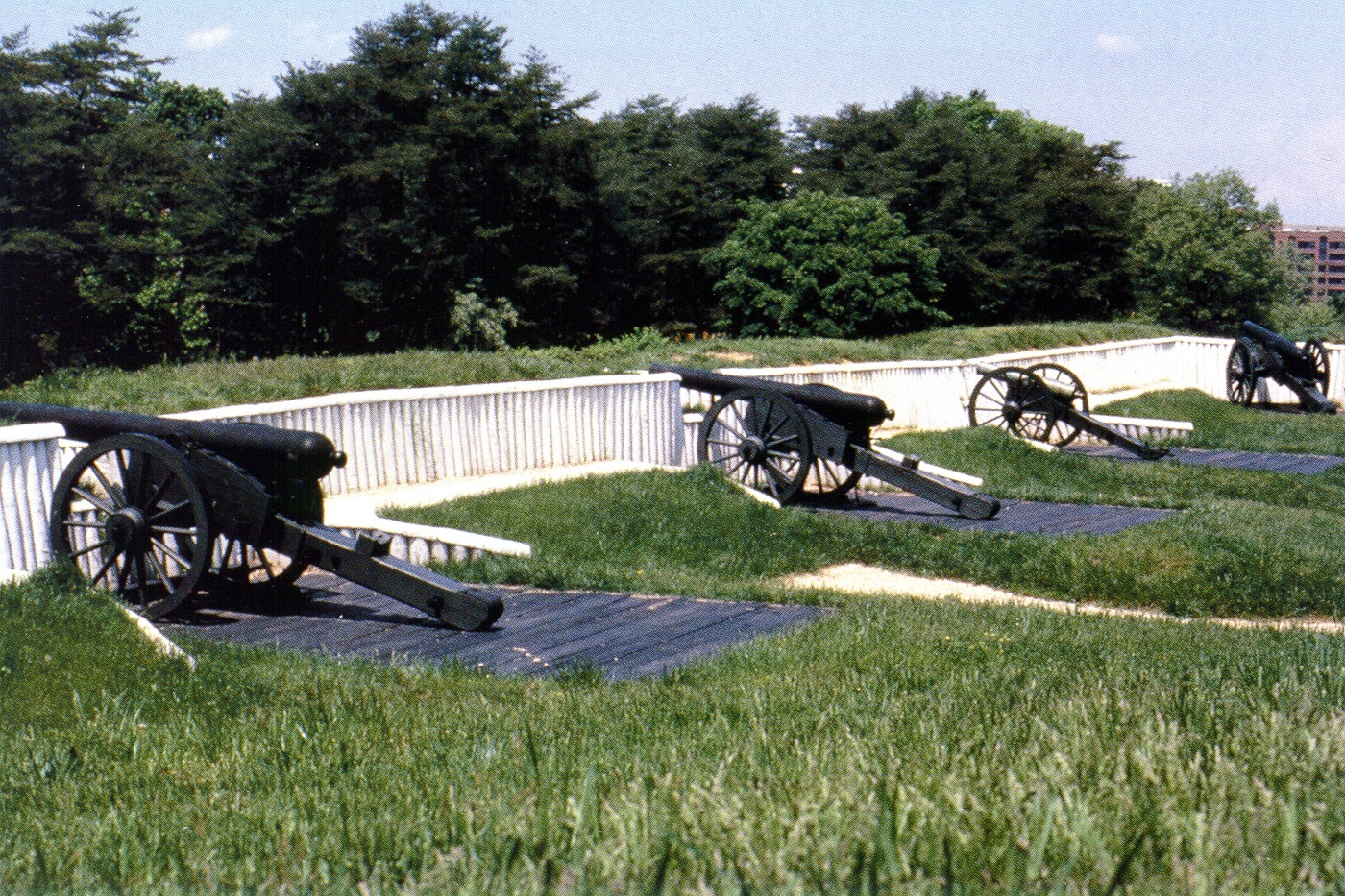
History of Fort Ward
History of Fort Ward
Construction of Fort Ward began in July 1861, immediately after the Union Army's defeat at the Battle of First Bull Run (First Manassas). The fort was completed in September 1861 and was named for Commander James H. Ward, the first Union naval officer to die in the Civil War. The initial earthwork fort had a perimeter of 540 yards and emplacements for 24 guns. After the Battle of Second Bull Run, Fort Ward was scheduled for rebuilding beginning in 1863. When the war ended in April 1865, the enlarged fort had a perimeter of 818 yards and emplacements for 36 guns. Throughout the Civil War Fort Ward served as a deterrent and never came under Confederate attack. It was abandoned in December 1865, and salvageable materials were sold at auction.


The Defenses of Washington
When Virginia’s secession from the Union became effective on May 24, 1861, the capital city of Washington, D.C. was placed in imminent danger. Located directly across the Potomac River from Virginia, the Federal capital was vulnerable to a possible attack by the Confederate army.
On the morning of May 24, 1861, Federal troops moved into Northern Virginia to secure the capital and began building earthen forts to serve as supply bases south of the Potomac River. Construction of additional forts was dramatically accelerated on both sides of the Potomac River after the Confederate victories at the Battle of First Bull Run (July 1861) and the Battle of Second Bull Run (August 1862). By the time the war ended in April 1865, Washington, D.C., guarded by 164 earthwork forts and batteries known as the Defenses of Washington, had become one of the most heavily fortified cities in the Western Hemisphere. The only time Confederate forces attempted to penetrate this line of defenses was in July 1864, when Maj. Gen. Jubal A. Early attacked Fort Stevens, the northern-most fort in the system.
In Alexandria, the Defenses of Washington included Fort Ellsworth, Fort Williams, Fort Worth and Fort Ward, now restored as a museum and historic site.


Commander James H. Ward

The first Union naval officer to be mortally wounded after the outbreak of the Civil War, Commander Ward was well known as a scholar and an authority on tactics and gunnery. He was instrumental in establishing the U.S. Naval Academy at Annapolis, Maryland. When Virginia seceded, a possible Confederate blockade of the Potomac River posed a serious threat to the main supply line for the capital city of Washington, D.C. Commander Ward was placed in command of a flotilla of seven ships charged with keeping the river open to shipping. While attempting to cover the withdrawal of a small Federal force at Mathias Point, Virginia, he was mortally wounded by gunfire from a Confederate sniper and died shortly thereafter.
The Battle of Fort Stevens
Located approximately seven miles from the White House, Fort Stevens was the northern-most fort in the Defenses of Washington. On July 11, 1864, Confederate General Jubal A. Early approached the fort in an attempt to test the strength of the Defenses of Washington. General Early decided to reconnoiter and press his attack on the morning of July 12. With the arrival of the dawn, Early could clearly view a well-manned fort. During the night General U.S. Grant had dispatched troops from Petersburg, Virginia back to defend the capital. After several failed efforts, General Early withdrew across the Potomac River into Virginia. This was the only time Confederate forces tried to breach the defense system. President Abraham Lincoln visited the fort during the battle and is considered to be the first president to come under enemy fire during his term of office. Fort Stevens is operated by the National Park Service.
Restoring and Preserving the Fort

In 1961, to commemorate the Civil War Centennial, the City of Alexandria undertook the partial restoration and preservation of Fort Ward. An archaeologist and historian were hired to ensure that the project was completed according to professional standards. The Northwest Bastion was selected for restoration while the extant walls were preserved. The archaeological field work continued through 1962, when the actual restoration work began. The goal was to utilize authentic material to return the Northwest Bastion of the fort to its 1864 appearance, including the cannons. The weapons were manufactured based upon the 1864 table of armament for the fort. The fort, museum and park opened to the public on May 30, 1964. Fort Ward has been cited as one of the best Civil War restoration/preservation projects in the mid-Atlantic region, as well as the flagship of the Defenses of Washington.
Through continued preservation efforts, Fort Ward’s earthen walls are 90-95% intact although erosion continues to plague the fort site as it did in the 1860s. Trees in the fort have been left in place since their roots provide stability to the earthen structure. To provide improved handicapped access without compromising the historic site, a bridge was constructed through an existing cut in the fort walls.
Fort Ward Museum, erected in the 1960s, was patterned after wooden, board and batten style military structures built in the camps and forts around Washington during the Civil War. Note the white, curved trim on the two-story building called gingerbread, a popular feature used on Victorian houses during the 1800s. No documentation has been found to indicate that such a building stood at Fort Ward; however, structures of this type were commonly used at other forts in the Defenses of Washington.
Alexandria During the Civil War
Within days of Virginia's secession from the Union in the spring of 1861, Federal troops arrived in Alexandria to take possession of the city. Union military forces arrived on May 24, 1861, and Alexandria became a logistical supply center for the federal army.
Many of the largest buildings in town, including The Lyceum, were confiscated for use as hospitals and for other official purposes and many new warehouses were constructed along the waterfront. It was during this era that several forts were constructed in Alexandria as a part of the defenses of the City of Washington.
Learn more about Alexandria during the Civil War, Alexandria's Civil War hospitals, and life during the Civil War, and explore online resources.